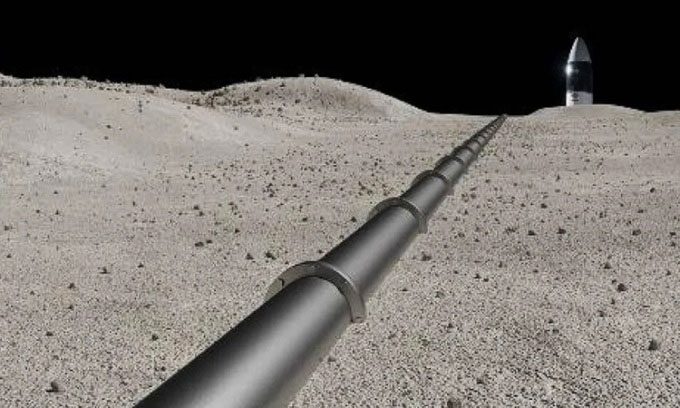NASA is considering using an oxygen pipeline to efficiently transport oxygen to various locations around the lunar south pole for the upcoming Artemis mission.
Peter Curreri, the science director at Lunar Resources Inc, detailed the issues with NASA’s current plan to transport oxygen using autonomous robots. Curreri submitted a proposal to the NASA Innovative Advanced Concepts (NIAC) program. His team is one of 14 research teams funded with $175,000 to develop their ideas, as reported by Interesting Engineering on January 17.

Simulation of an oxygen pipeline on the lunar surface. (Image: Peter Curreri).
The Lunar Pipeline in the proposal is officially named Lunar South Pole Oxygen Pipeline (LSPOP), connecting to NASA’s ice mining center at the lunar south pole. Both NASA, China, and Russia are targeting this area due to its large amounts of ice and other resources just below the surface. This ice will play a crucial role in the plan to send humans to the Moon as it can be extracted, converted into drinking water and breathable oxygen, as well as used as rocket fuel.
Previously, NASA’s plan was to store ice in pressurized frozen tanks and transport it using autonomous robots. These robots would need to carry ice to an area near the equator. In contrast, Curreri’s lunar pipeline idea would provide a regular supply of oxygen for settlers, significantly reducing transportation costs. Unlike pipelines on Earth, leaks on the Moon would not cause pollution; instead, oxygen would simply escape into space due to the Moon’s lack of atmosphere.
According to Curreri, the initial idea involves a 5-kilometer pipeline to transport oxygen from a production source, such as a molten regolith electrolysis (MRE) area or any other source, to an oxygen liquefaction or storage facility near the lunar base. If NASA approves the LSPOP for the Artemis mission, the pipeline will be manufactured in segments on the Moon before being fully assembled. The pipeline could be made from aluminum, a material that is abundant in the south pole region.


















































